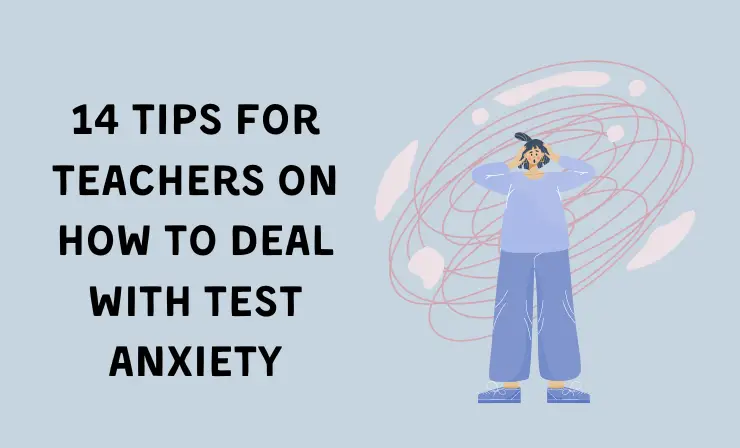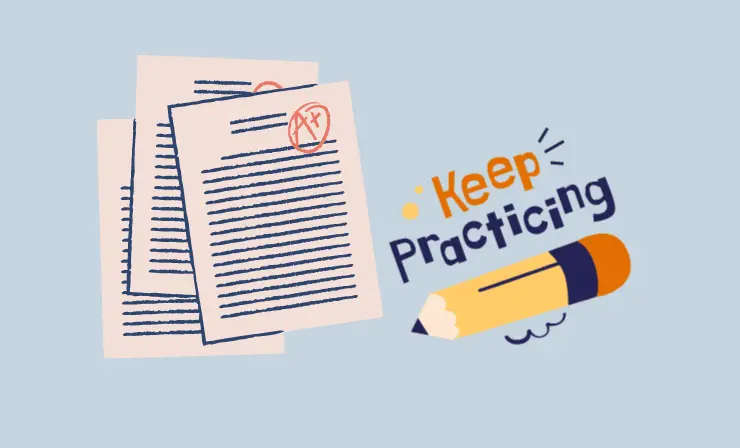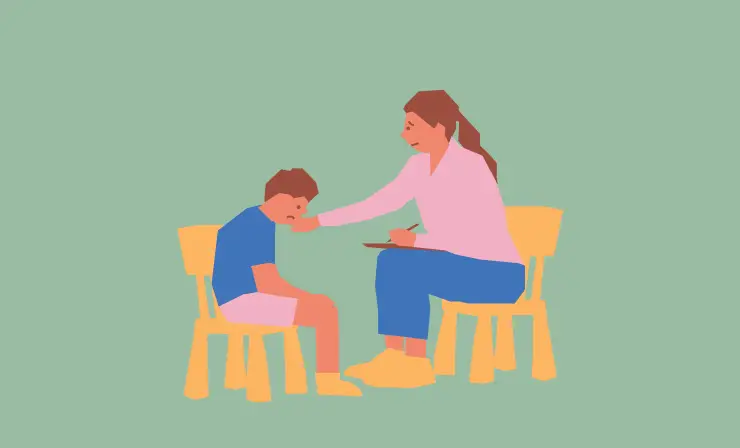Test anxiety affects students of all ages. Even those who earn straight As can have so many problems when it comes to test time that they flunk their exams and lower their GPAs.
As an educator, you need to know how to deal with test anxiety and how to make your students relax. You never know when the principal or superintendent might check on your test scores or pop in for an inspection. Not only do these tips help them feel more confident, but they show that you’re a great teacher.

Test anxiety is a serious problem that affects students today. It can happen when they take standardized tests such as the ACT or SAT as well as these tests they take in your classroom.
Here’s a list of tips:
- Use Breathing Exercises →
- Encourage Students to Arrive Early →
- Get Rid of the Clock →
- Identify Anxious Students Ahead of Time →
- Offer Test Taking Strategies →
- Have Some Fun →
- Give Students an Outlet →
- Take One or More Breaks →
- Create a Prep Plan →
- Plan Rewards →
- Incorporate Study Logs →
- Make Extra Credit Fun →
- Use Practice Tests →
- Talk to the School Counselor →
While using tests is a good way to monitor the progress of your students and make sure they are on the right path, it can cause a range of feelings and emotions that make them perform worse than they should. Luckily for you, there are tips for teachers on how to deal with test anxiety.
Take a look through this video to pick up seven helpful tips on how to beat test anxiety.
1. Use Breathing Exercises
Using breathing exercises is a great way to get your class relaxed and focused. You don’t need to spend a lot of time running them through loads of exercises either. When the students come in and take a seat, ask them to get comfortable and take a deep breath.

Have them inhale and exhale multiple times to clear their minds before you pass out your test.
2. Encourage Students to Arrive Early
If you teach in an elementary, junior high, or high school, you have set times at which students take tests. College professors often have more freedom when it comes to the times they pick.
Encouraging your students to get to the testing site early gives them more time to prepare. Make sure that they also know what they need to bring with them to take the test such as a number two pencil or a calculator.
“Don’t study like a perfectionist,” warns Todd Finely. He also warns students to avoid caffeine before test time.
24 Ways to Beat Test Anxiety | Brain Blast#edchat #k12 pic.twitter.com/eyfZreMdZo
— Todd Finley (@finleyt) January 31, 2022
3. Get Rid of the Clock
Do you remember how nervous you felt watching the clock as you took a test? Your students feel the same way. It essentially acts as a timer that can make their anxiety worse. Removing the clock from your classroom lets the students focus on the exam and nothing else.

You can let them know at different points how much time is left. Consider giving your students an idea of how much time they should allocate to each section, too.
4. Identify Anxious Students Ahead of Time
Identifying students who suffer from test anxiety ahead of time is one of the best things that teachers can do. Students who are prone to anxiety include those who have a hard time letting go of mistakes, strive for perfection, and spend a lot of time asking questions before an exam.
You can try different things to help those students relax such as offering a study session the night before. Making the session optional allows those who feel prepared to head home or hang out with friends. Let them know that only those who think they need more help should attend.

“Avoid sitting/talking to others who may add to the anxiety,” recommends the AU Center for Well-Being, which also suggests getting a good night’s sleep the night before.
5. Offer Test Taking Strategies
Whether you host test prep classes or offer reviews the day before, consider offering test taking strategies that students can use on the day of the exam. Let them know the type of questions you will add to the exam such as multiple choice or essay questions.

You also want to make sure they know how to read through the test first. This allows them to focus on the questions they can answer right off the bat and those they need to think about before they answer.
6. Have Some Fun
Is there anything worse than a teacher who takes everything seriously and drones on and on? Those teachers can make students’ test anxiety worse. Look for ways to have fun with your students before the test starts. You might show a short YouTube clip before the test starts or tell a funny joke.

Make sure that you don’t spend so much time helping them have fun that you distract them from the exam though.
7. Give Students an Outlet
A great and easy way to handle test anxiety is when you give students outlets to talk about their feelings before exam day. You can pass out pieces of paper and ask them to write down any problems or issues they have with the test. Then, sit down with them and talk through everything you found.
You can also host an open forum that lets students discuss their worries and concerns. Easing their mind will go a long way toward helping them feel better about the test.

“Some research already shows that performance anxiety (like test or math anxiety) undermines test performance directly & also indirectly THROUGH studying behaviors, which partially mediate the effects of performance anxiety on test performance,” says Chris Rozek in response to an APA study.
8. Take One or More Breaks
Standardized tests usually include a break at the halfway point. Once students complete one section, they can grab a snack, use the bathroom, or just walk around.
You do not need to require that your students sit down and complete the test in one sitting. Consider breaking the test into different parts and giving them a break after each section.

It’s also helpful to allow students to take a break whenever they need one. Don’t be one of those teachers who refuses to let students grab a drink of water or use the bathroom until they finish their test. This article goes over the best software to help your students succeed.
9. Create a Prep Plan
Students often spend a lot of time preparing for an upcoming exam. Creating a prep plan or schedule is a good way to make sure they are all on the same track. Instead of covering a new subject in the days before the test, go over the information they need to know for the test such as names and dates.

You can also pass out a schedule that shows them which chapters and sections they should focus on and how much time to spend on those sections each day.
10. Plan Rewards
Many students have an easier time dealing with stress and anxiety when they find ways to reward themselves after an exam. They might go out to eat with friends or buy a new video game.

While you probably don’t have money in your budget to treat the whole class to a free meal, you can reward them in other ways. Younger kids will love fun gifts like scented erasers or pencil decorations. Older students might love snacks like candy bars and small bags of chips and pretzels they can grab when they turn in their tests.
11. Incorporate Study Logs
A study log is a document that lets students keep track of their work. They write down every subject they study and how long they spent on that topic.

Study logs allow you to keep if all students keep pace with each other and identify those who need more help. You might consider offering rewards to students who turn in completed study logs before an exam.
Check out this article to find educational software that’s suitable for distance learning teachers.
12. Make Extra Credit Fun
Many teachers ask extra credit questions on their exams. Students have the option of skipping these questions, but if they answer correctly, they get bonus points on their scores.

Asking funny or off the wall questions can help students cope with their test anxiety because they take their minds off the exam. You might ask who sang a popular song, what color tie the principal wore, your first name, or even who won the last school game.
13. Use Practice Tests
A practice test is a version of the exam you plan to offer that covers some of the same material. Many of the teacher’s editions of textbooks include practice tests in the back.
While students can take those tests at home, letting them do so in the classroom recreates the environment they’ll be in on the big day. It also shows them some of the areas they need to work on before the exam and which areas they have down.

If you don’t have access to practice tests or want to make your own, read through this article to find software that helps you create worksheets and sample exams.
14. Talk to the School Counselor
School counselors help students deal with anything on their minds, from problems in schools to issues at home. Talking with your school counselor allows you to work together to come up with solutions that your students can use.
It’s often helpful to encourage your students to make a counseling appointment to talk through their thoughts and feelings. You can also ask the counselor to come in and talk with your students a few days before the exam.

“In response to test anxiety, we reflected on the purpose of assessment and brainstormed ways to assess our learning this year,” Nicole Cimo. She followed up with, “ Students voiced that they want their grades to reflect mastery AND collaborative efforts. They also conferred with me to decide on their test score.”
Coping with Test Anxiety in the Classroom
Test anxiety presents with signs and symptoms that include both physical and emotional symptoms. Those signs include:
- Increased heart rate
- Sweating
- Anger
- Depression
- Fidgeting
Test anxiety is a psychological condition in which people experience extreme distress and anxiety in testing situations. The symptoms of test anxiety can vary considerably and range from mild to severe. Here are tips to recognize if your child has test anxiety. pic.twitter.com/nouJ0GHSUr
— TutorDoctorClarksburg (@ClarksburgTutor) November 24, 2022
Academic success is certainly important, but children’s health is much more important.
Useful Recourses
- High School & GED Test Prep books
- How Do I Create Tests for my Students?
- Top 35 Educational Psychology Books, Interventions, & Apps
It’s important to keep in mind that these symptoms vary between students. While one student might fidget in their seat and keep looking around, someone else struggling with test anxiety can internalize their feelings and present no symptoms. You need to use a few tips on how to deal with test anxiety such as offering rewards and breaks to help your students relax and focus on their exams without worrying about their scores and GPAs. The top tips are easy to incorporate into your classroom and lesson plans
- Overview of 22 Low-Code Agencies for MVP, Web, or Mobile App Development - October 23, 2024
- Tips to Inspire Your Young Child to Pursue a Career in Nursing - July 24, 2024
- How Parents Can Advocate for Their Children’s Journey into Forensic Nursing - July 24, 2024

I thought that anxiety has another symptoms… Thanks for brining this to light, the problem is quite current
My pleasure